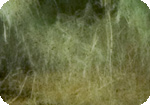| Tuesday, 13 May 2025 Home • About Us • Contact Us |
|
|
|
You are here:
Indoor mold exposure is associated with numerous health problems, including respiratory problems, asthma and allergies. Mold thrives in moist conditions and therefore the bathroom is ideal place for mold to grow. However, a few preventative measures can help to rid yourself of mold and mildew in and around the bathroom.
Make Sure Your Drains Drain Properly Check that there is good drainage in the sink, bathtub or shower. When water doesn't drain properly, it stands, creating an environment that is moist for longer periods of time and these are environments in which mold thrives. If the water does not drain as quickly as the water is run, there is a drainage problem. Use a bleach solution, or a solution specially formulated to unclog drains, or call a plumber if the drain stoppage is particularly bad. Reduce Clutter Toiletries, shampoo and shower gel bottles, etc are constantly in contact with water and are the perfect breeding ground for mold. The more of them there is in the bathroom, the longer it takes for the shower or bathroom to dry. . Throw away, store, or use up any products that you don't use frequently. Place them where they will not sit in collected water - you may even consider hanging a shelf that is easily reached from the shower, as this will allow your products to air-dry completely, avoiding mold growth. Thoroughly Clean When cleaning the bathroom, make sure to remove all products first. Remove all damp or moldy areas with a sponge and a suitable cleaning solution. Before putting the products back, wipe them with a moistened cloth that contains some of the same cleaning solution. This will deter mold by removing any already present around the bases of bottles and jars, kill germs, and prevent the already sanitized surface from being re-contaminated with mold and bacteria. Repairs and Remodeling It may be that the caulking around the bathtub, sink or shower is peeling, old or cracked. Mold may even have found its way behind caulking, and some mold even grows in the pores of the caulk itself. It is usually impossible to remove this mold and the caulking will need to be replaced. Mold growth can also be reduced by replacing loose, old, or outdated faucets and fixtures. Remember:
Keeping your bathroom free of mold doesn't have to be a routine, time-consuming task. Regular cleaning and maintenance, and reduction of surfaces on which mold can grow should keep mold at bay, and make your bathroom a healthier environment.
Link to this article: Show: HTML Link • Full Link • Short Link
Related Articles: Add a Comment You must be registered and logged in to comment. |
|
 |
 | |
|
|








